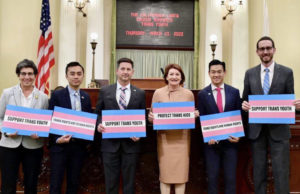‘Perfect storm’: New data supports transgender contagion theory
The rising number of teens now identifying as “non-binary” is part of a social contagion spread by education bureaucrats and social media, indicates new data.
According to the New Jersey…

The rising number of teens now identifying as “non-binary” is part of a social contagion spread by education bureaucrats and social media, indicates new data.
According to the New Jersey Department of Education, the numbers of teens who identify as “non-binary” has skyrocketed since the 2019-2020 academic year.
Four years ago, just 16 students identified as non-binary. But since gender ideology lessons were widely introduced into public schools, that number has skyrocketed to 675, including 41 students in primary school, said Upward News.
“BREAKING: New data finds that there has been a 4000% spike in students that identify as non-binary in New Jersey,” writes Gays Against Groomers, a non-profit association of gays against the sexualization, indoctrination and medicalization of children.
Critics contend that widespread school propaganda, social media campaigns and LGBT activism have created a surge of cases of gender dysphoria in highly impressionable children.
“The figure[s]… shows that among those who identify as transgender, the percentage of adolescents and young adults is larger than would be expected based on their share of the overall US population,” said David C. Geary, a professor of psychological sciences and interdisciplinary neuroscience at the University of Missouri.
Geary says the data show that numbers of trans youth vary widely by state, indicating something local is affecting youth.
“The combination of the current social fixation on transgender issues, the availability of easily accessible information that supports the adoption of a transgender identity (e.g., to explain discomfort with normal physical changes during puberty), and the broad approach to provide social support and affirmation unconditionally make for a perfect storm,” said Geary.
Several studies have claimed to debunk the social contagion theory, but those studies don’t cover the years of staggering explosions of cases.
One study used data from the years 2017 and 2019 to cast doubt on the social contagion theory. But data supplied by Reuters shows that the number of new diagnoses of kids between 6-17 years of age for gender dysphoria nearly tripled from 2017 to 2021.



